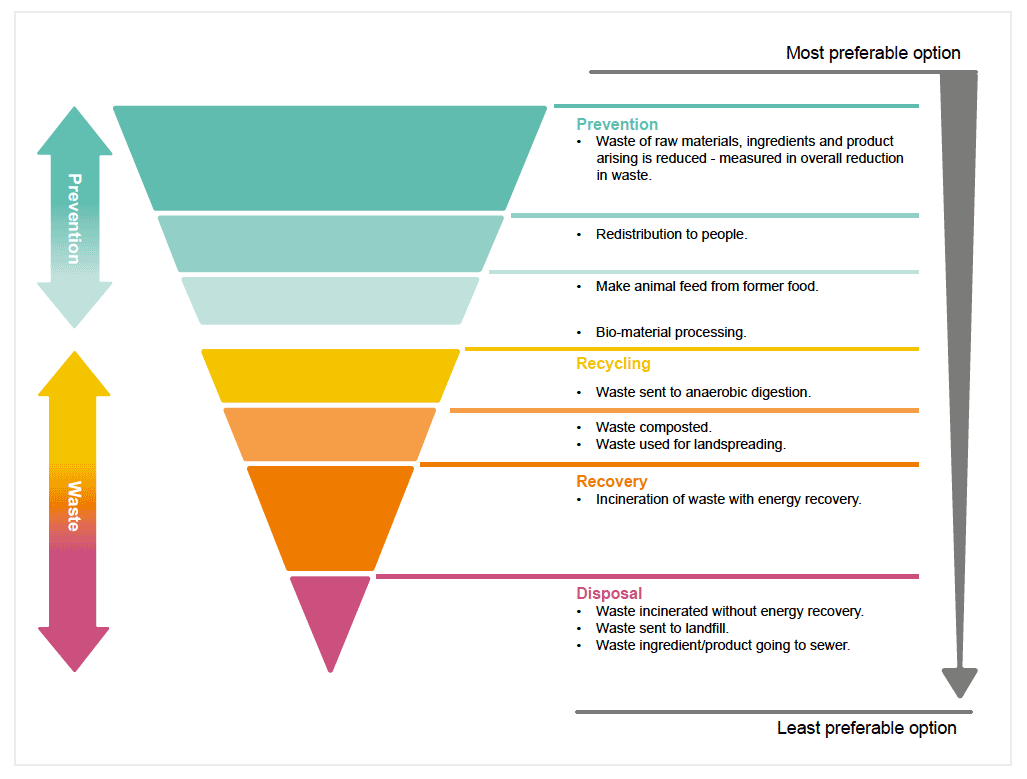Food waste reduction: action plan
Sets out how Scotland can work to deliver it's commitment to reduce food waste by 33% by 2025.
Where we are
In Scotland, we reduced household food waste by 5.7% between 2009 and 2014 (Zero Waste Scotland, 2016). Our local authorities now provide food waste recycling services to most Scottish households.
This reduction in waste is a result of a range of Scottish initiatives and programmes including:
- improved local authority segregated food waste collections;
- Love Food Hate Waste Scotland;
- Scottish Government consumer campaigns;
- SME Advice and Support Service;
- Education packs for schools;
- Pilot projects and;
- the Good to Go initiative.
UK-wide interventions such as the Courtauld Commitment 2025, and the UK-wide Love Food Hate Waste campaign have also contributed significantly. Circular economy experts, WRAP, have strengthened this work with their technical support and sector specific guidance.
All these initiatives have built a bank of experience and expertise which will support this Plan.
A collaborative effort
We are not alone in our ambitions to reduce food waste. The Courtauld Commitment 2025 (C2025) is a voluntary commitment on the part of more than 100 UK organisations in the food system. Its goal is to make the production and consumption of food and drink more sustainable by cutting the carbon, water and waste associated with food and drink while also reducing food waste from 156kg to 125kg per person. This will reduce food waste in the UK by 1.5million tonnes a year by 2025.
The Scottish Government is a signatory and supporter of the C2025 agreement. Zero Waste Scotland, together with the Scottish food and drink industry, works closely with WRAP and C2025 signatories towards the C2025 goals - and beyond - to meet the even more ambitious Scottish target. This work contributes further to the Sustainable Development Goal 12.3 target of halving per capita food waste at the retail and consumer levels by 2030, and of reducing waste in the food production and supply chains. The WRAP Food Waste Reduction Roadmap will support C2025 signatories as they 'target, measure, act' and reach milestones in 2019, 2021 and 2025.
The recent Department for the Environment, Food and Rural Affairs (DEFRA) 'Resources and waste strategy' further emphasises the importance of the C2025 actions in meeting the 2030 SDG goal. It focuses on redistribution and potential legislative tools to reduce food waste. It also provides guidance on the food and drink surplus and waste hierarchy; clearly prioritising prevention, and then, the treatment of food waste.
On the European level, food waste prevention is an integral part of the EU Action Plan for the Circular Economy. The Revised EU Waste Legislation calls on EU countries to reduce food waste at each stage of the food supply chain, to monitor food waste levels, and to report on their progress. The European Commission is developing a common EU methodology to measure food waste consistently and is expected to shortly pass a further revision to the EU Waste legislation requiring Member States to report food waste total annually and every four years provide detailed measurement of food waste at each stage of the supply chain.
It has also established a multi-stakeholder platform (EU Platform on Food Losses and Food Waste), of which Zero Waste Scotland is a member. The Platform includes EU countries and actors in the food chain, and helps define measurements, facilitate co-operation, and share best practice. A key goal of the Commission is to reduce food waste without compromising on food safety.
Between 2012 and 2017, the percentage of households recycling their food waste more than doubled, from 26% to 55%.
(Scottish household survey 2017: key findings).
Food recycling availability
Separating food waste for collection allows it to be recycled; releasing the embedded value remaining within it. Food waste can be recycled to produce electricity, heat and vehicle fuel as well as compost and/or fertiliser to help grow more food. There has been good progress in the availability of household food waste collection, with most Scottish households now able to access food waste collection services. Between 2012 and 2017, the percentage of households recycling their food waste more than doubled, from 26% to 55% (Scottish household survey 2017: key findings). Rates are lower in flats than houses, although the proportion of caddy use in flats is increasing. Food recycling rates are also lower in rural areas, where the rate of food waste composted at home or disposed of in residual waste is higher.
Only food businesses who consistently generate more than 5kg a week are affected by the regulations to separate food waste. Those businesses and organisations below this threshold, or who are defined as 'rural' under the Scottish Government classification, are not currently required to separate their food waste for collection.
The food waste hierarchy
Scotland's 33% target will focus strongly on prevention and will adhere to the principles of the food and drink surplus and waste hierarchy (detailed in Figure 2).
Figure 2: Food waste hierarchy definition (adapted from WRAP UK)

Landfill ban
From 1st January 2021, landfill operators in Scotland will be banned from accepting Biodegradable Municipal Waste. This will reduce landfill and greenhouse gas emissions and help us to extract the remaining resource value from residual waste. This legislative target will drive local authorities and businesses to further improve food waste prevention, separation, and reuse. Adequate support and guidance from bodies such as Zero Waste Scotland and SEPA will be required to help them do this.
Contact
Email: anne.dagg@gov.scot
There is a problem
Thanks for your feedback